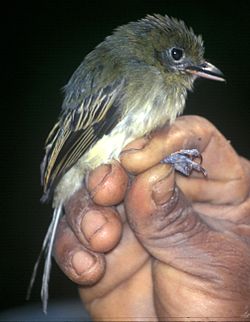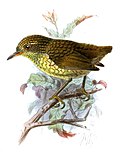| Rhynchocyclus | |
|---|---|
 | |
| Western olivaceous flatbill (R. aequinoctialis) | |
| Scientific classification | |
| Kingdom: | Animalia |
| Phylum: | Chordata |
| Class: | Aves |
| Order: | Passeriformes |
| Family: | Tyrannidae |
| Genus: | Rhynchocyclus Cabanis & Heine, 1860 |
| Type species | |
| Cyclorhynchus olivaceus Desmarest=Platyrhynchos olivaceus Temminck | |
| Species | |
5, see text | |
| Synonyms | |
Rhynchocyclus is a genus of passerine birds in the tyrant flycatcher family Tyrannidae.





